The Devil’s Tooth fungus, scientifically known as Hydnellum peckii, is a fascinating and unique species of fungus that has captured the attention of mushroom enthusiasts and researchers alike. With its distinctive appearance, habitat preferences, and potential medicinal benefits, the Devil’s Tooth fungus delights and horrifies all at the same time.
- Scientific Name: Hydnellum peckii
- Common Names: Strawberries and cream, Bleeding Hydnellum, Red-juice tooth, Peck’s hydnum, Bleeding tooth fungus, and devil’s tooth
- Habitat: On the ground, under conifer trees
- Edibility: Inedible, tough and bitter
- Psychoactive properties: None
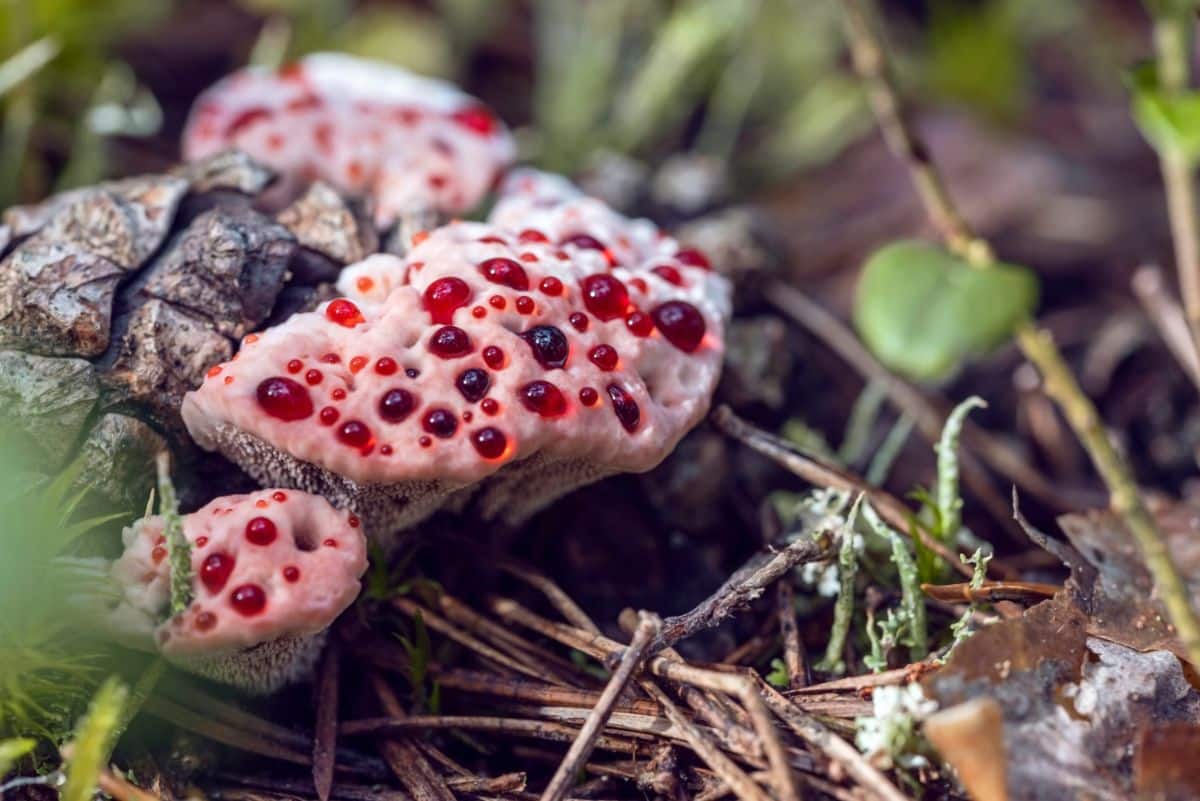
Jump to:
All About Devil’s Tooth Fungus
The Devil’s Tooth fungus has captured the imagination of people throughout history thanks to its unique appearance and potential medicinal properties. The bright crimson red droplets it produces when young has led to various intriguing names, such as “strawberries and cream” and “bleeding tooth fungus.” David Arora described it as a “Danish pastry topped with strawberry jam.”
Interestingly, the process of how the fungus produces the peculiar red droplets is not entirely known. When a plant displays this characteristic, it is as a means of transpiration (moving water) when it determines there is too much moisture. And the transpiration function is initiated by root pressure, forcing the water through the stems and out special glands.
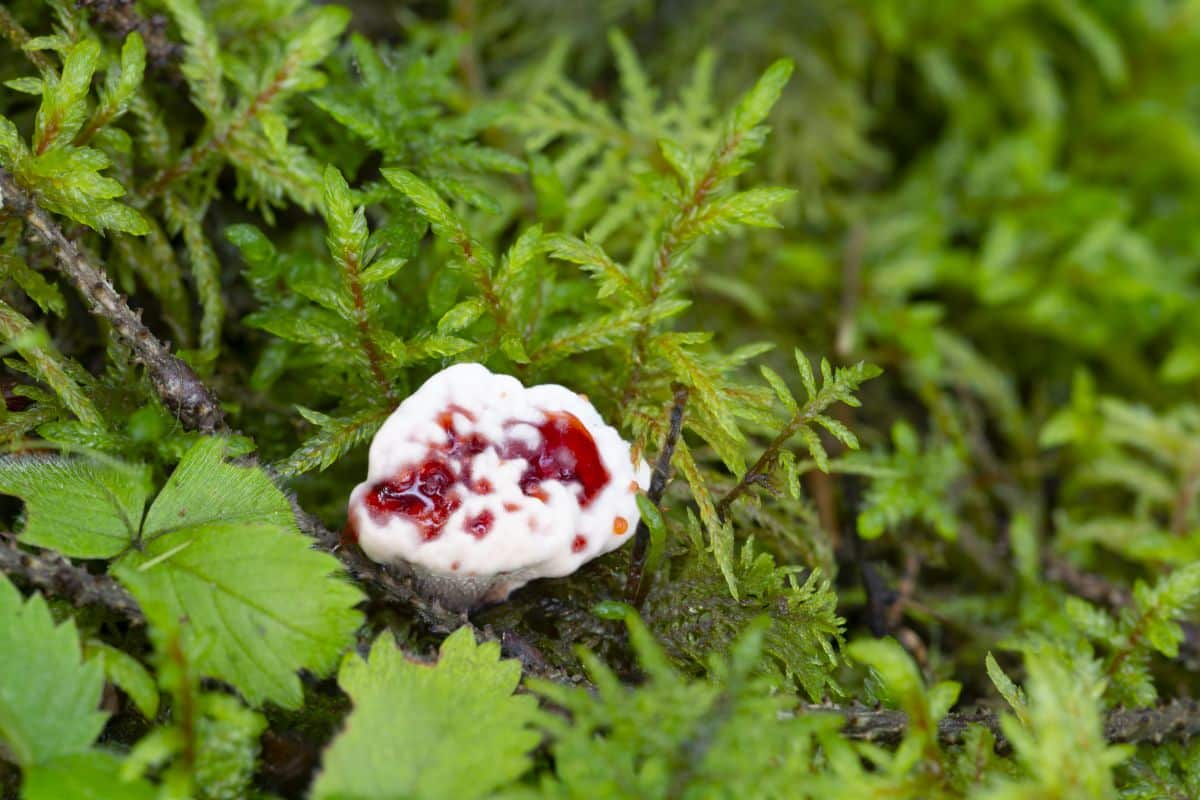
For fungi like the devil’s tooth, though, it is unknown what prompts the exuding of droplets from the fruiting body. It is thought that when the fungi grow quickly (when they are young), the profuse movement of air and gasses produces more water, which must be expelled.
The Devil’s Tooth fungus is a member of the family Bankeraceae and belongs to the genus Hydnellum. It was first scientifically described by American mycologist Howard James Banker in 1913. The specific epithet “peckii” honors mycologist Charles Horton Peck, who described nearly 3,000 fungi species in North America.
Hynellum species like the devil’s tooth are known to be “pushy,” as they frequently grow in large groupings and even onto or on each other. They will grow across leaves, sticks, and most debris they encounter without a second thought. Growth is generally slow, persisting for months, but is unstopped by any grass or twigs it encounters. The twigs, leaves, and grass blades then end up embedded in the caps.
The appearance of the Devil’s Tooth fungus is often an indicator of an old, species-rich forest. Its presence or absence can provide valuable information about the health of a forest ecosystem. In some parts of Europe, the fungus is becoming increasingly rare, possibly due to pollution and nitrogen deposits affecting its habitat. In the United Kingdom, it has been classified as an endangered species since 2006.
The fungus has also been used by natural dyers, who dry it and use it to create beige and blue-green hues.
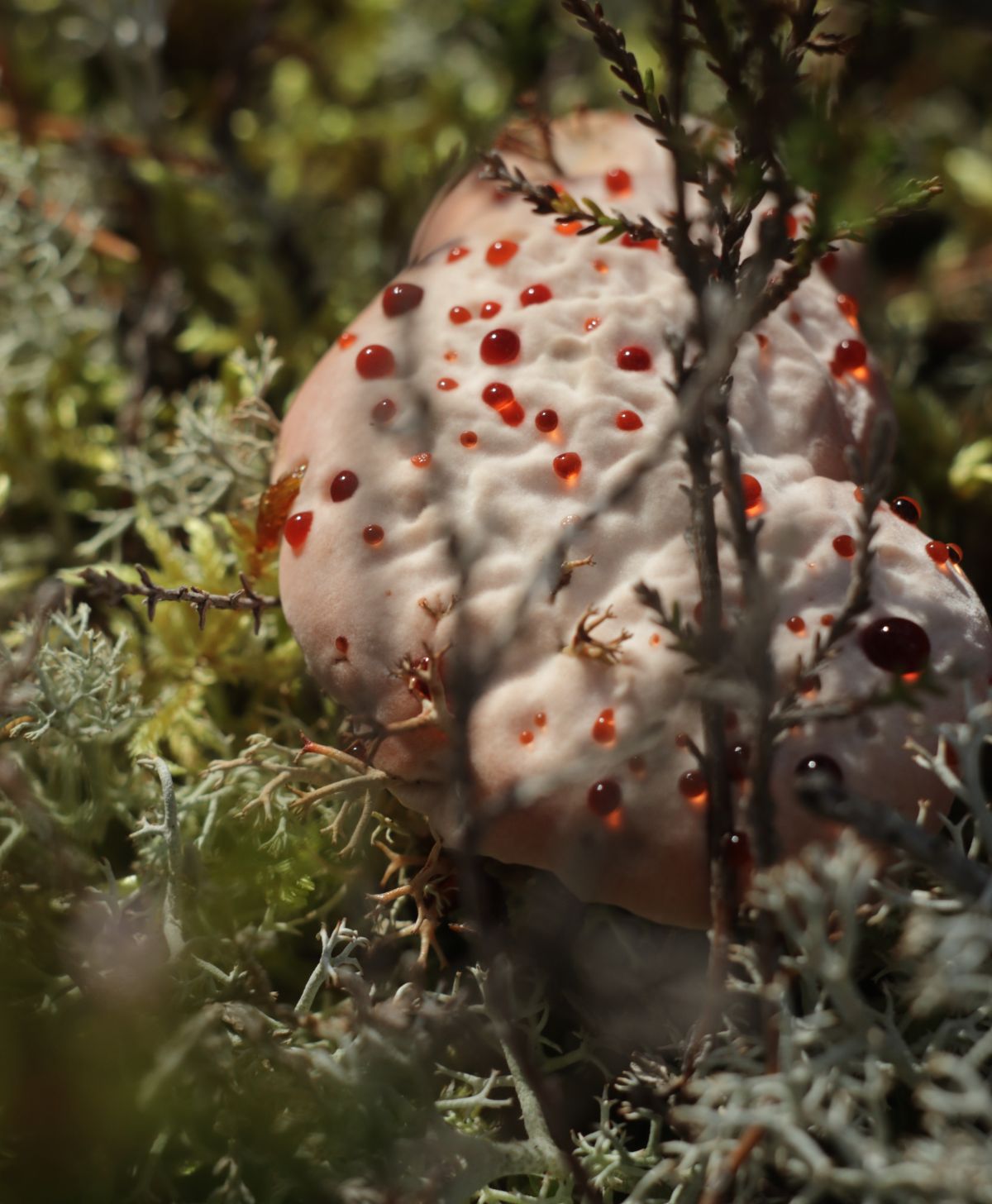
Devil’s Tooth Fungus Identification Guide
Season
The Devil’s Tooth fungus typically appears during late summer and autumn.
Habitat and Distribution
The Devil’s Tooth fungus is primarily found in forested, often mountainous, areas. It is most commonly encountered in North America and Europe. In the United States, the Devil’s Tooth fungus is most commonly found in the Pacific Northwest, but its range extends from Alaska to North Carolina.
This fungus forms a symbiotic relationship with coniferous trees, growing among their roots and exchanging nutrients to mutually benefit. It is known to associate with pines, western hemlock, Douglas fir, and Sitka spruce.
Its fruiting bodies can be found growing on the ground, either singly or in scattered groups. In some cases, multiple fruiting bodies may fuse together, creating larger fused masses (known as confluence). It always grows on the ground, never on trees or wood. To find this species, look in mossy areas or among pine needle litter.
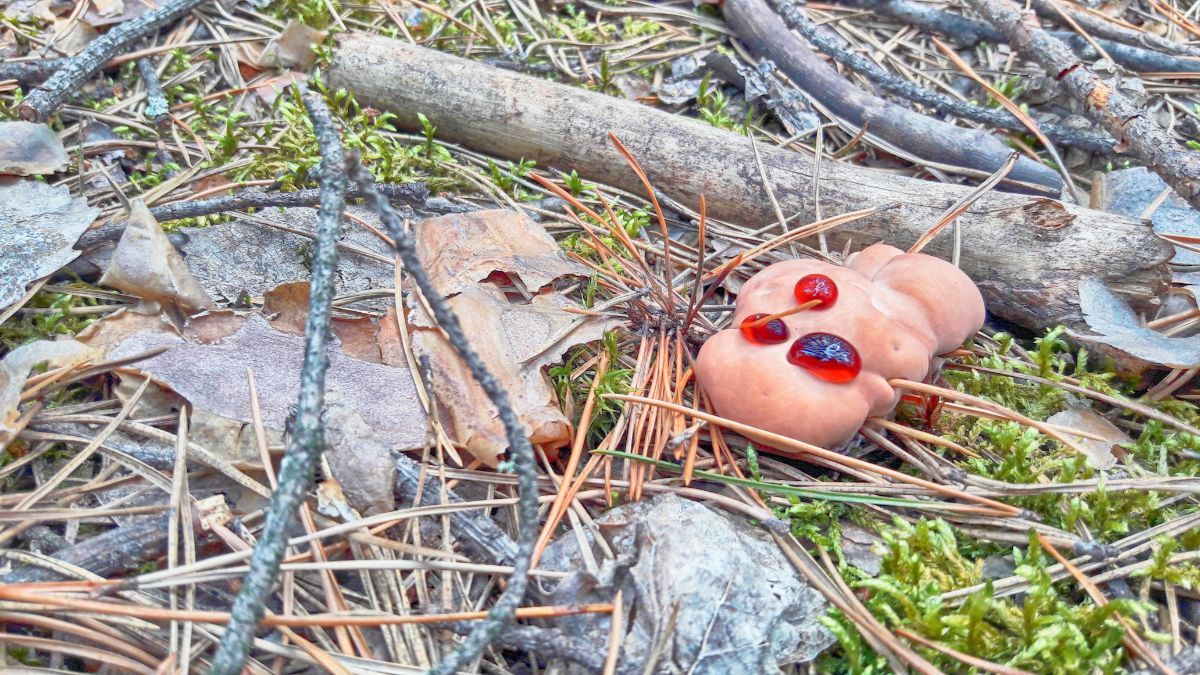
Identification
Cap
The cap of the devil’s tooth is usually funnel-shaped with a white edge, although its shape can be highly variable. It often develops lopes or uneven edges as it bumps and grows into and onto things. The cap’s surface is covered with hairs, giving it a velvety texture. Caps grow up to 4 inches tall and average 2-4 inches wide. They are quite striking and eye-catching when young.
Young specimens have a whitish cap with a brighter white edge and exude a thick, bright red fluid that looks like blood. This fluid starts out looking like blood droplets on the cap surface, then often pools together to cover much of the surface of the mushroom. Not all specimens exude this red liquid, so don’t be surprised if you see young ones without it. The majority do, though.
The flesh of the cap is very tough and corky. With age, the funnel shape becomes more or less flat or slightly depressed in the center. The fungi may also shed the hair on the cap as it ages, leaving a bald, smooth surface.
When young and covered with bloody droplets, this fungus is pretty easy to identify. However, with age, the cap turns grayish brown with a darkened brownish center before turning black and decaying. In addition, the cap surface becomes scaly and jagged, and woody. It is extremely plain looking at this point compared to its younger self. At this stage, it’s harder to identify. Also, it often gets overlooked at this point since its flashiness is gone.
Spines (Teeth)
Instead of gills or pores, the Devil’s Tooth fungus features tooth-like projections on the underside of the cap, which are responsible for producing spores. These spines are less than 1/4″ long and are usually pinkish in color. They run down the stem partway. The spines are crowded and become shorter closer to the cap edge. With maturity, they turn grayish brown.
The crimson red droplets also commonly exude from the spiny underside of the cap, in addition to the top of the cap. This causes a very eerie effect as the whole fungus seems infected … or infectious!
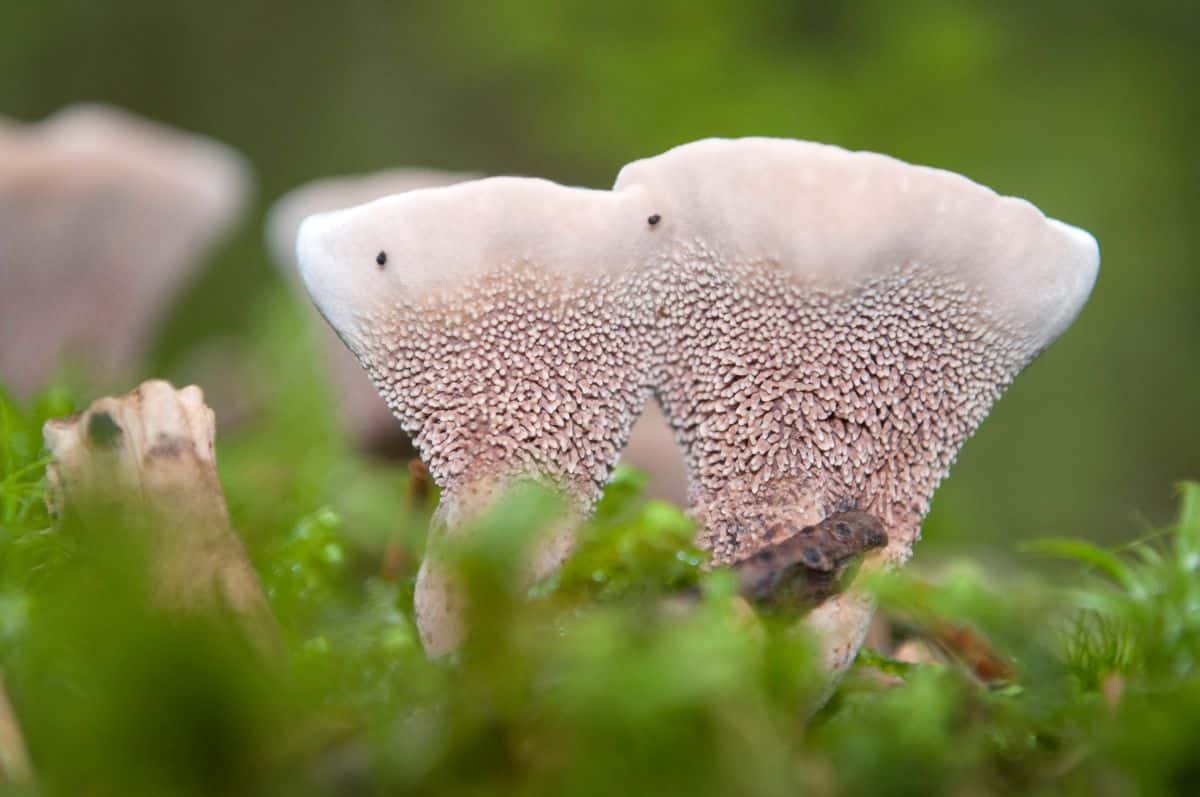
Stem
The stem of this fungus is thick, short, and often deformed. It is usually pinkish-brown in color. The upper portion of the stem is decorated with the same teeth as appear underneath the cap, while the lower portion is covered in hairs that give it a velvety texture. The stem is rounded at the base and often is burned in the soil an inch or so. While the entire stem is usually between 1-2 inches long, less than ½ inch appears aboveground.
Flesh
The flesh of the Devil’s Tooth fungus is pale pinkish-brown with a tough and fibrous texture.
Odor and Taste
This fungus has a mild to disagreeable odor, sometimes described as similar to hickory nuts. It tastes extremely unpleasant and is sometimes even spicy hot, so even if the outward appearance isn’t enough to deter you from eating it, your remorseful tongue will!
Spore Print
The spore print of this fungus is dull brown in color.
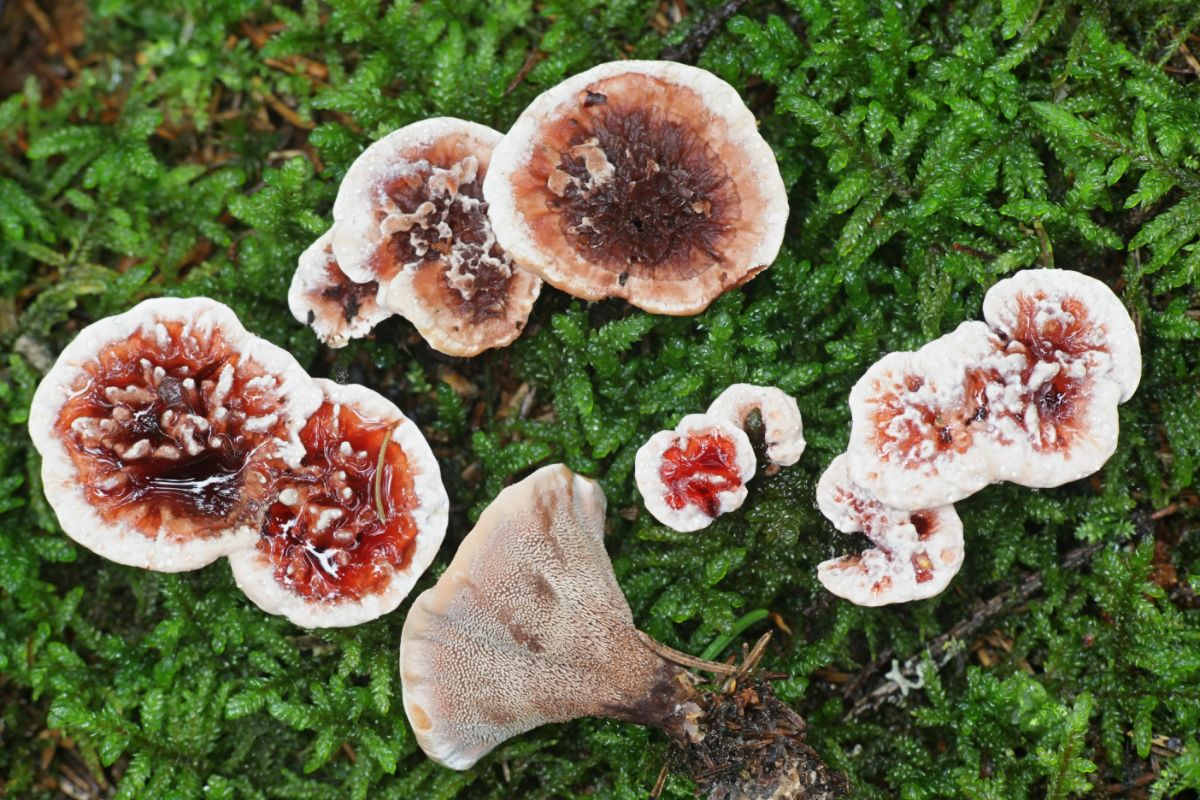
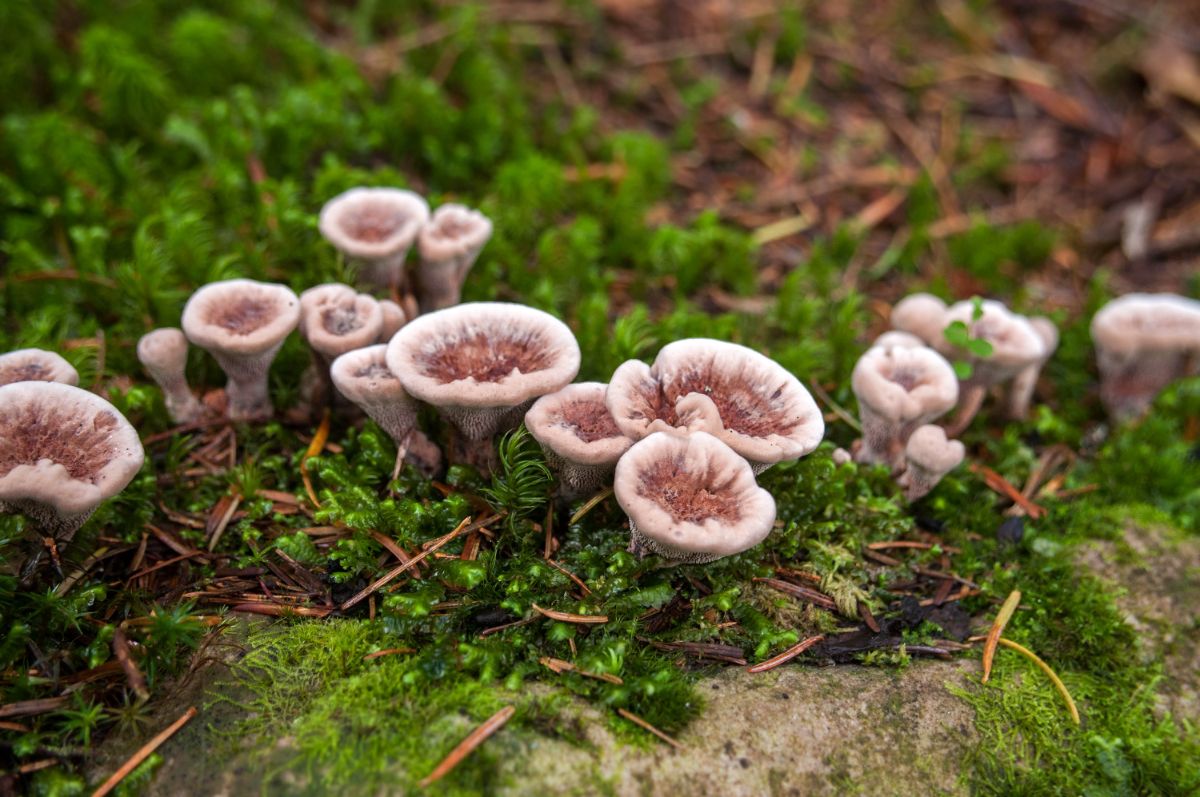
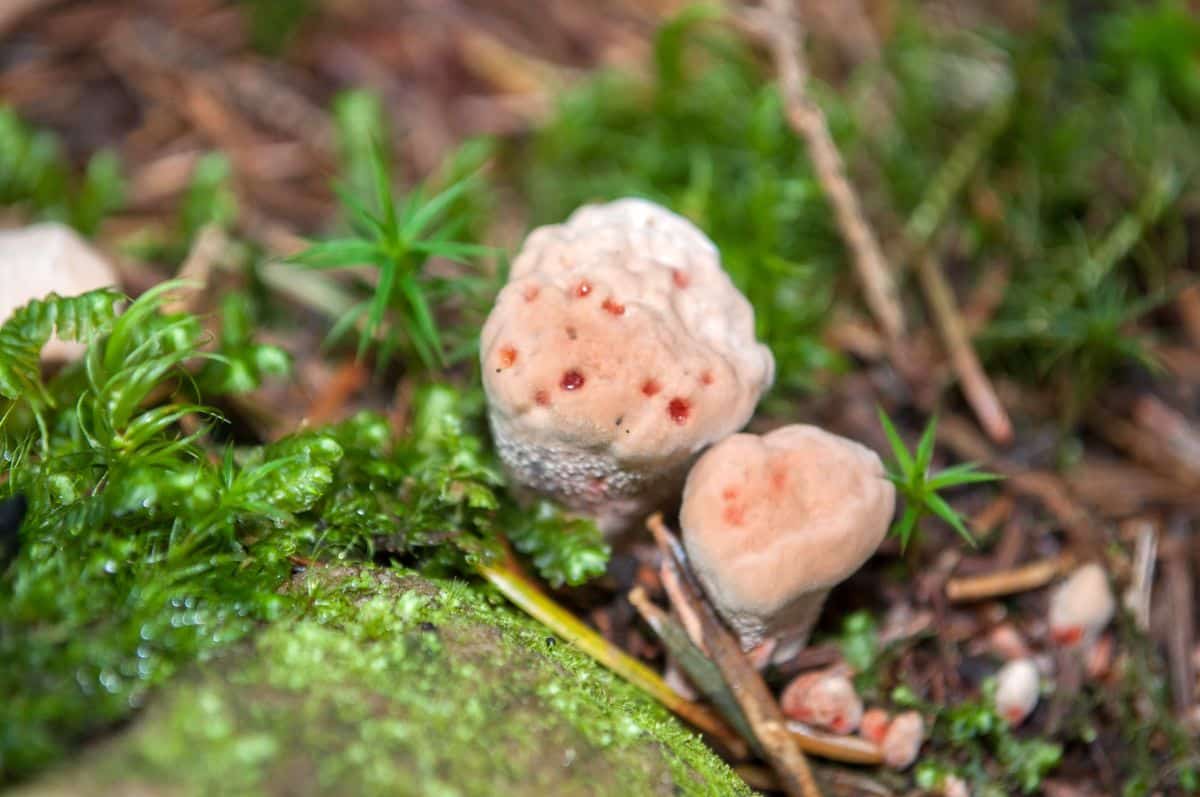
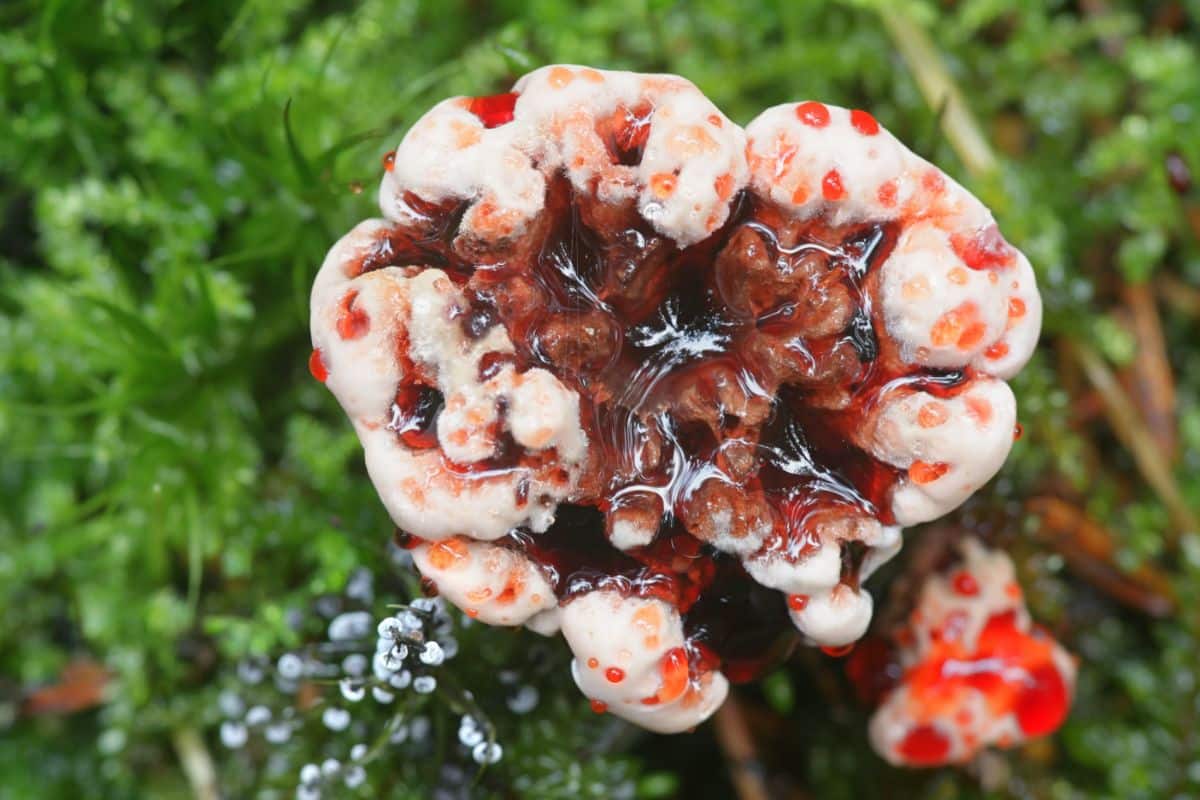
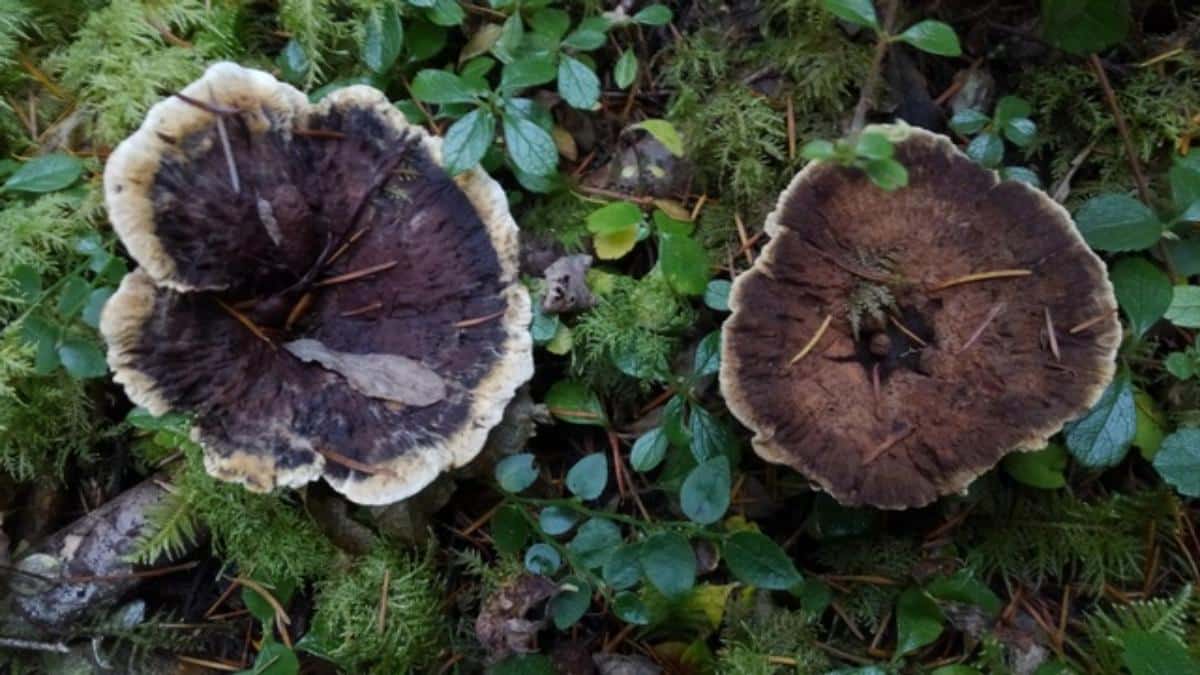
Devil’s Tooth Fungus Lookalikes
There are several species that may resemble the Devil’s Tooth fungus, making identification more challenging. Some of these similar species include:
Mealy Tooth (Hydnellum ferrugineum)
This species is very similar in appearance to the Devil’s Tooth fungus but has a mild taste rather than a hot one. Microscopic differences in hyphal structure can be used to distinguish the two species. It may be that this species occurs more commonly east of the Rocky Mtns (or only east of the Rocky Mtns?). The map on Mushroom Observer, although not scientific proof, indicates that might be a possibility. Or, the two species are getting entirely confused and mislabeled due to their extreme resemblance.
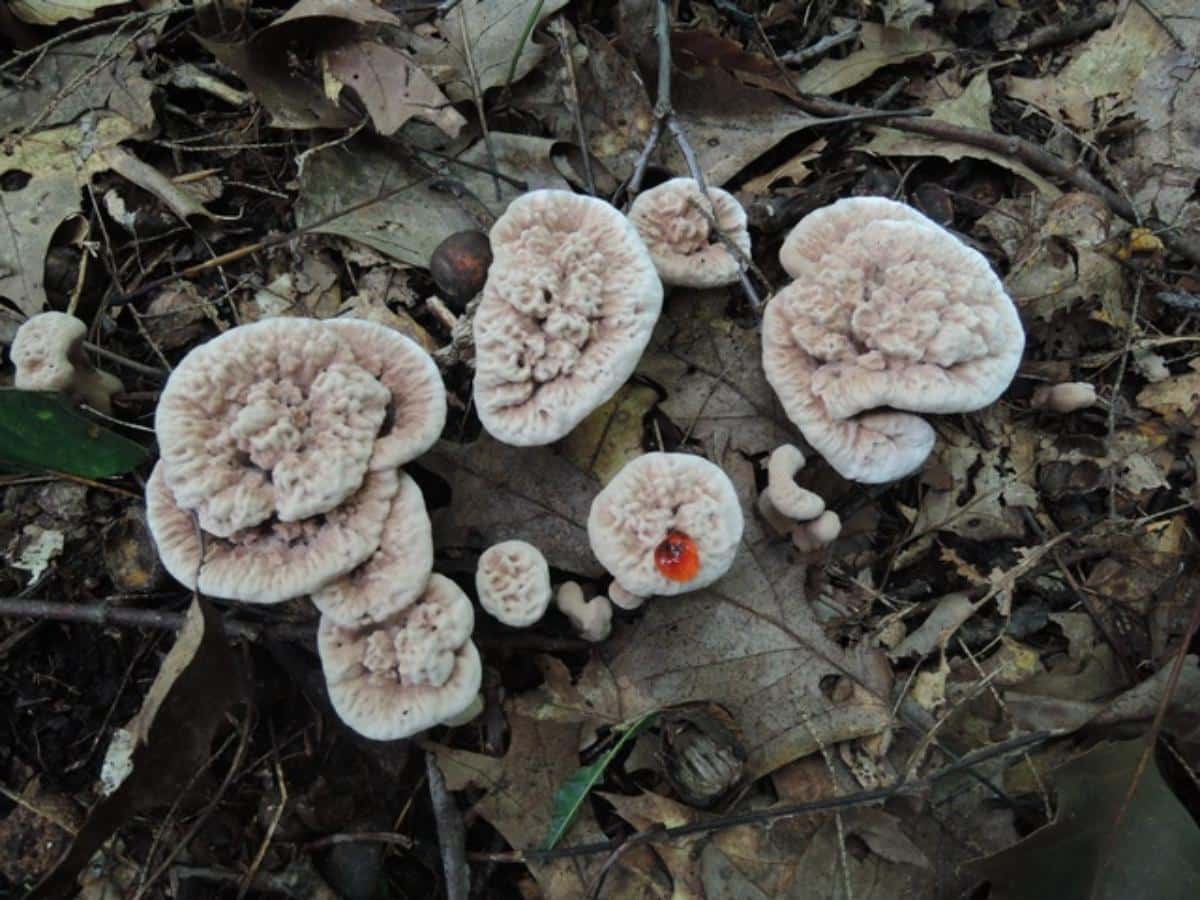
Hydnellum diabolus (may be a synonym of Hydnellum peckii)
Extremely similar looking but does not have the sweet, pungent odor of the devil’s tooth. Its stem is also irregularly thick and, when mature, has a hairy cap, unlike the devil’s tooth, which has a smooth cap in maturity. Whether these differences are enough to qualify the two as separate species is still to be determined.
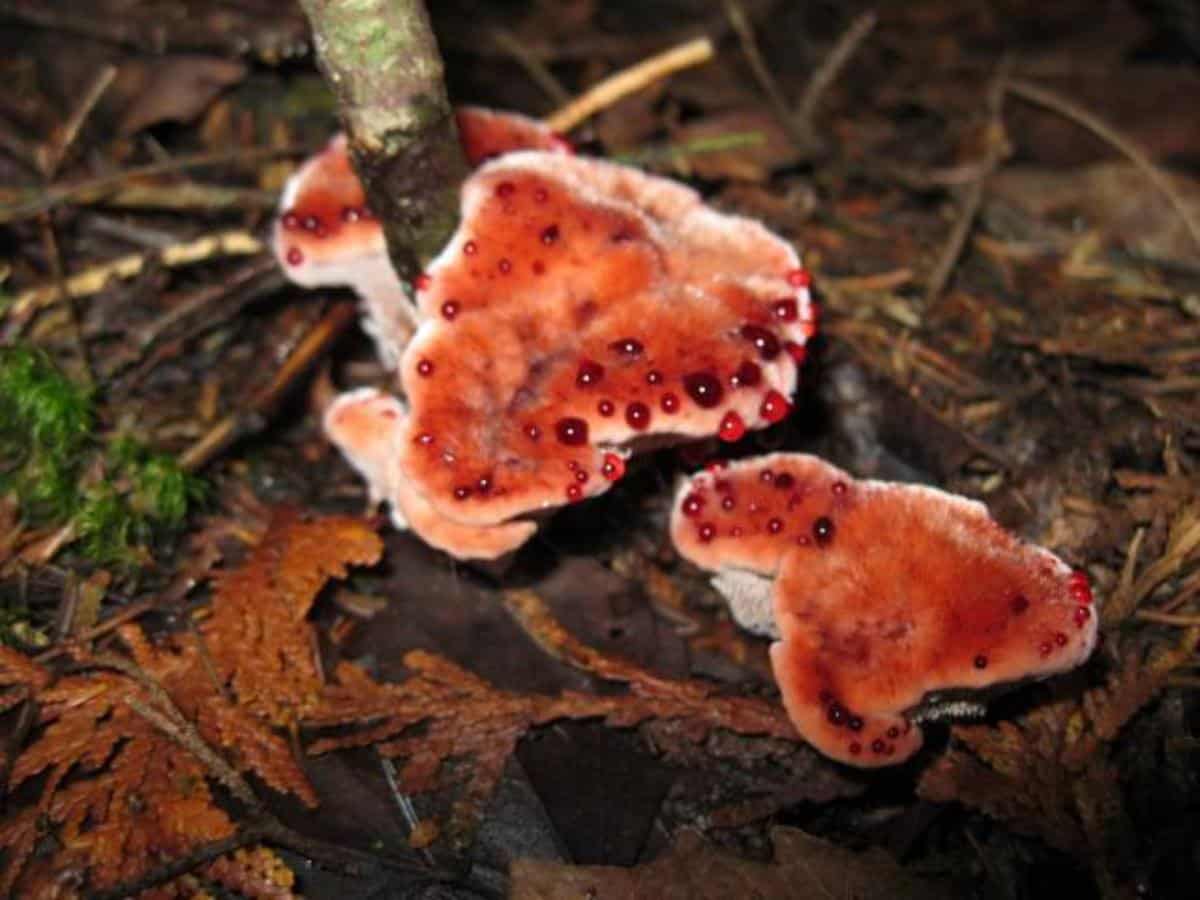
Hydnellum scrobiculatum
Older devil’s tooth fungi that have lost their bright coloring resemble this other species of Hynellum. However, this one tends to have zoned brown coloring on the cap edge and doesn’t taste as acrid.
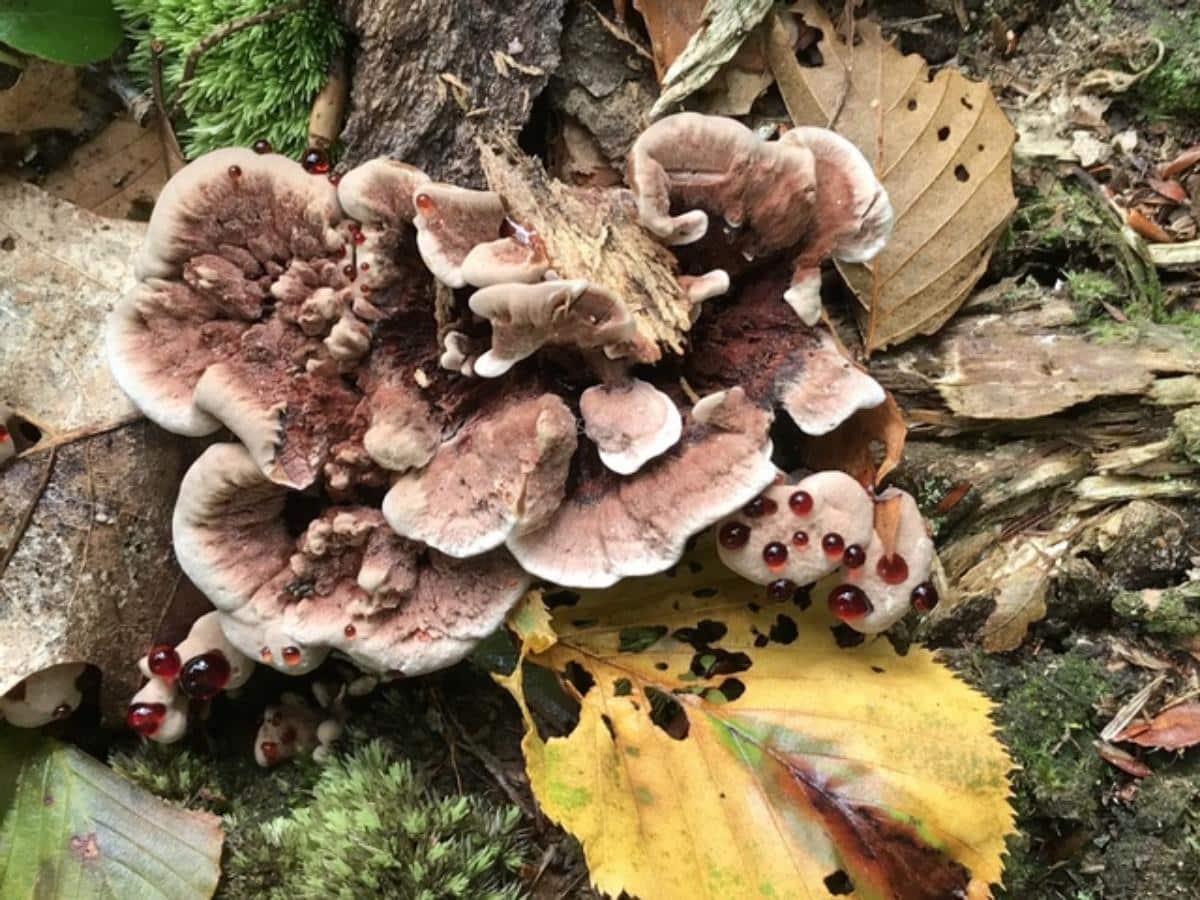
Edibility of Devil’s Tooth Fungus
While the Devil’s Tooth fungus is not considered poisonous, its extremely bitter taste makes it unpalatable and not recommended for consumption. There are no known culinary uses for this species.
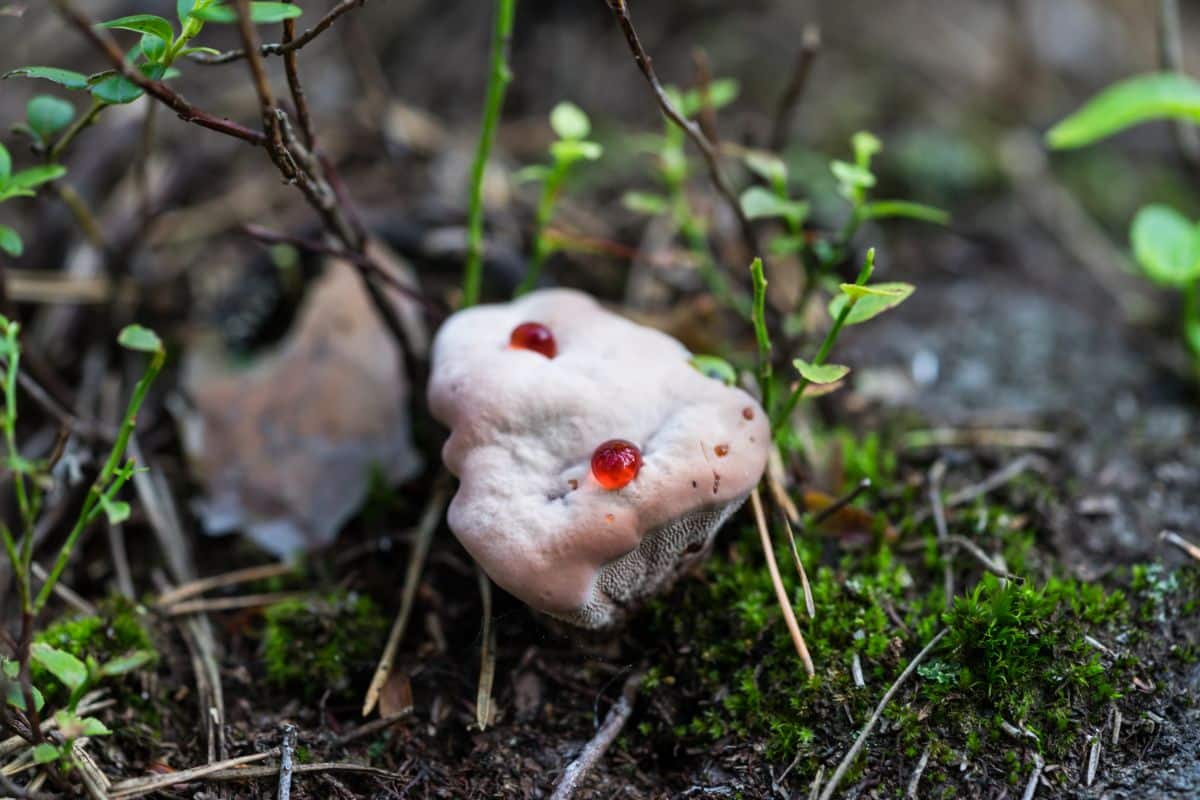
Devil’s Tooth Fungus Medicinal Uses
The Devil’s Tooth fungus has been found to contain a chemical compound called atromentin, which has several potential medicinal benefits. Atromentin has anticoagulant properties, similar to the drug heparin, which can help prevent blood clots from forming. Additionally, atromentin has been shown to have antibacterial, antineoplastic (anticancer), and smooth muscle stimulant properties.
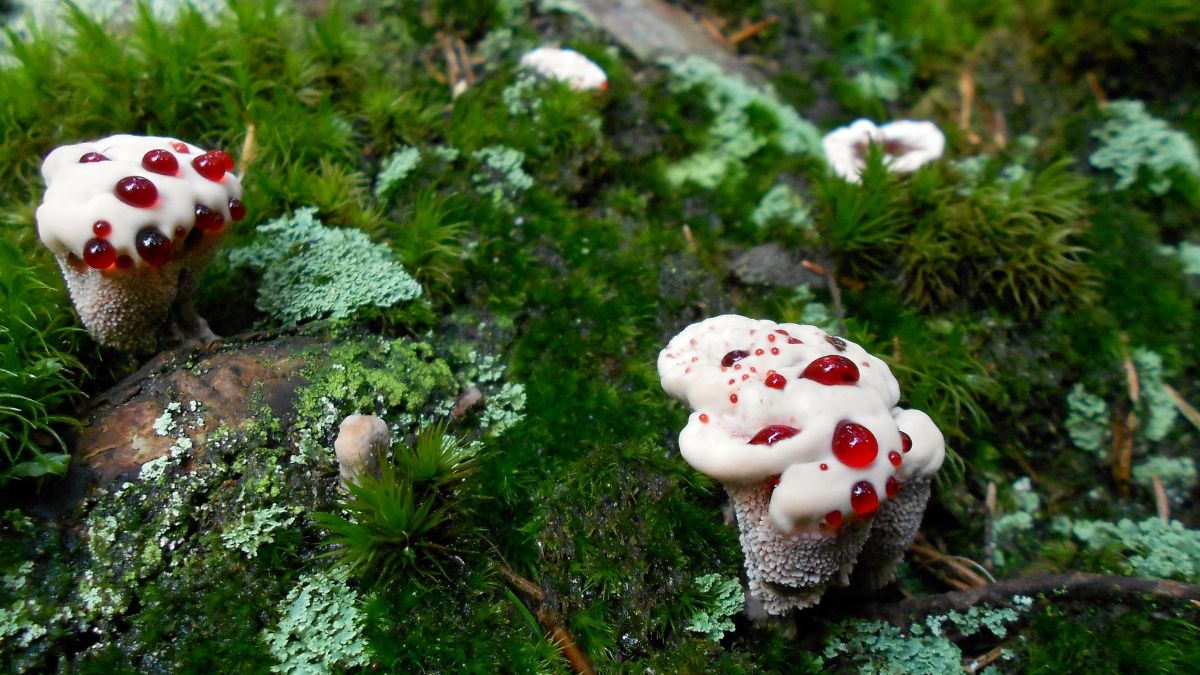
Interested in other tooth fungi — check out the prized edible Hedgehog Mushrooms. Like the bizarre fungi? Take a look at these Stinkhorns.
Devil’s Tooth Fungus Common Questions
Is Devil’s Tooth fungus poisonous?
No. This is not a toxic mushroom. However, it is also not one that you want to eat. It is tough, fibrous, and has a very sharp, acrid taste.





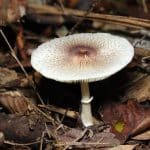
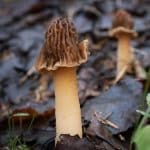
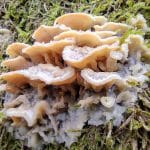
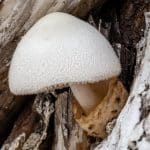
Leave a Reply